NRG Energy Bundle
Who Really Controls NRG Energy?
The ownership structure of NRG Energy, a leading player in the energy sector, is a critical factor influencing its strategic decisions and overall performance. From its origins as a subsidiary to its current status, understanding NRG Energy SWOT Analysis is essential for investors and stakeholders alike. Knowing who owns NRG Energy directly impacts its market position and the strategies it employs in a constantly evolving energy landscape.
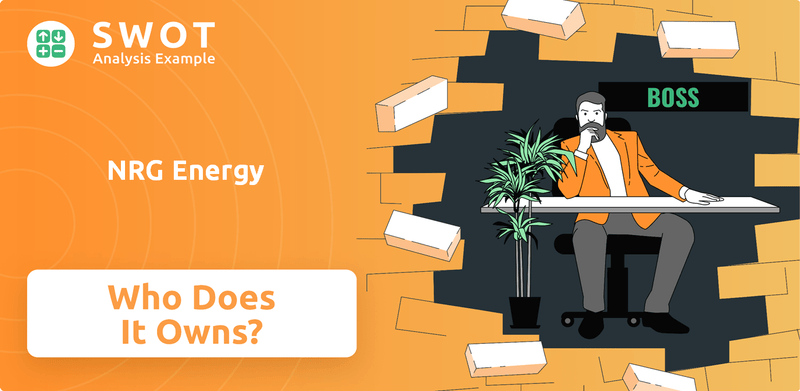
This exploration into NRG Energy ownership will reveal the key players shaping its destiny. We'll examine the evolution of NRG Energy company profile, from its initial structure to the influence of major shareholders and the impact on governance. Discover how NRG Energy investors and the public shareholders have shaped the company's direction and its financial performance, answering questions like: Is NRG Energy a publicly traded company? Who are NRG Energy's major shareholders? What is NRG Energy's stock symbol?
Who Founded NRG Energy?
The story of NRG Energy began in 1992, not with individual founders, but as a subsidiary of Northern States Power Company (NSP), later known as Xcel Energy. This means that from its inception, the ownership of NRG Energy was entirely within NSP. The creation of NRG Energy was a strategic move by NSP to manage its non-regulated power generation assets.
There were no traditional founders with equity stakes. Instead, NRG Energy was formed as a corporate entity to handle NSP's power generation ventures. This structure meant that early backing came directly from NSP's resources and its vision for expanding into competitive energy markets. Any early decisions regarding ownership were internal corporate decisions made by NSP.
The founding team's goals aligned with NSP's strategy to diversify its energy portfolio and enter the independent power production sector. The initial structure was a reflection of NSP's corporate strategy rather than involving external investors. As of late 2024, the company continues to operate with a focus on energy solutions.
Understanding the origins of NRG Energy is crucial for grasping its current structure and operations.
- NRG Energy was established in 1992 as a subsidiary of Northern States Power Company (NSP).
- There were no individual founders in the traditional sense; ownership was held by NSP.
- Early backing and strategic direction came from NSP's corporate resources.
- The founding team's vision was aligned with NSP's strategy to diversify its energy portfolio.
NRG Energy SWOT Analysis
- Complete SWOT Breakdown
- Fully Customizable
- Editable in Excel & Word
- Professional Formatting
- Investor-Ready Format
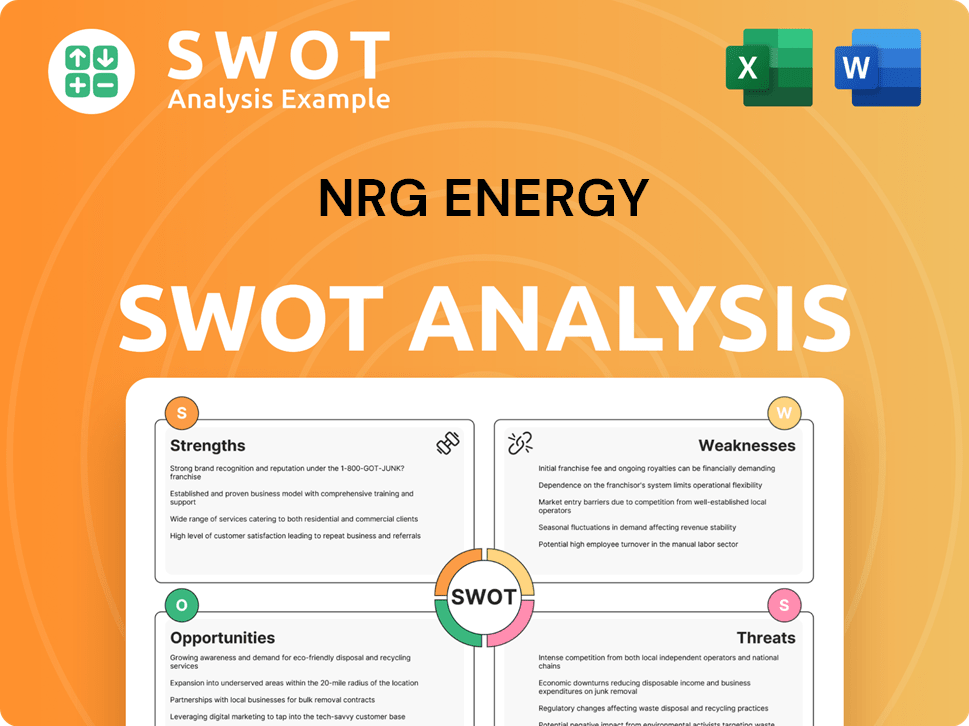
How Has NRG Energy’s Ownership Changed Over Time?
The evolution of NRG Energy's ownership structure has been marked by significant transformations since its inception. The initial public offering (IPO) in 1999, when Northern States Power Company spun off a portion of NRG Energy, was a pivotal moment, making it a publicly traded entity. However, the company faced considerable challenges, leading to a bankruptcy filing in 2003. The subsequent emergence from bankruptcy later that year fundamentally reshaped its ownership landscape, with bondholders converting debt into equity, thereby establishing a new shareholder base. This restructuring was crucial in setting the stage for the company's future.
As of early 2025, NRG Energy is a publicly traded company on the New York Stock Exchange (NYSE: NRG). The ownership is largely diversified, with institutional investors holding a dominant position. According to recent SEC filings and market data, major institutional stakeholders include prominent asset management firms and mutual funds. For instance, as of March 31, 2025, The Vanguard Group, Inc. and BlackRock, Inc. are consistently among the top institutional holders, collectively controlling a substantial percentage of NRG's outstanding shares. Other significant institutional investors often include State Street Global Advisors, JP Morgan Investment Management Inc., and various hedge funds and pension funds. The proportion of shares held by institutional investors usually ranges around 85-90% of the total outstanding shares, reflecting a common trend for large, established public companies. If you are interested in the NRG Energy's target market, you can read more about it in this article: Target Market of NRG Energy.
| Key Event | Impact on Ownership | Year |
|---|---|---|
| Initial Public Offering (IPO) | Partial spin-off from Northern States Power Company, making it publicly traded. | 1999 |
| Bankruptcy Filing | Led to significant restructuring and potential changes in ownership. | 2003 |
| Emergence from Bankruptcy | Restructured ownership, with bondholders converting debt to equity. | 2003 |
These shifts in major shareholding directly impact company strategy and governance. The influence of large institutional investors often translates into a focus on shareholder returns, operational efficiency, and environmental, social, and governance (ESG) considerations. For example, activist investor campaigns, while not always leading to proxy battles, can influence management decisions regarding capital allocation, asset divestitures, or renewable energy investments. The company's strategic direction, including its recent emphasis on optimizing its generation portfolio and strengthening its retail electricity business, is often a response to market pressures and shareholder expectations. Understanding NRG Energy ownership is crucial for investors and stakeholders alike. Knowing who owns NRG Energy provides insights into the company's strategic direction and financial health. For those looking to invest, knowing NRG Energy investors can help assess the company's stability and potential for growth. The NRG Energy stock performance is also heavily influenced by these factors.
NRG Energy's ownership has evolved significantly since its IPO.
- Institutional investors hold a significant portion of the shares.
- Major stakeholders include The Vanguard Group and BlackRock.
- Ownership structure influences company strategy and governance.
- Understanding NRG Energy ownership is key for investors.
NRG Energy PESTLE Analysis
- Covers All 6 PESTLE Categories
- No Research Needed – Save Hours of Work
- Built by Experts, Trusted by Consultants
- Instant Download, Ready to Use
- 100% Editable, Fully Customizable
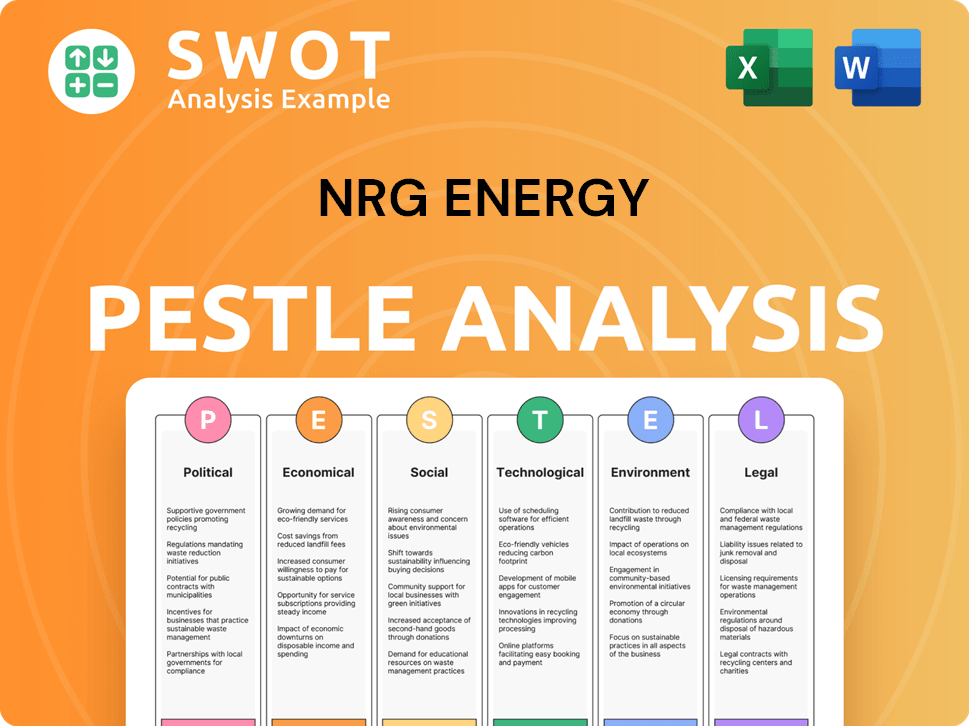
Who Sits on NRG Energy’s Board?
As of early 2025, the Board of Directors of NRG Energy is composed of a blend of independent directors and individuals with substantial experience in the energy sector. This structure is typical for publicly traded companies, ensuring independent oversight. The board's composition reflects a balance of expertise, often including members with backgrounds in finance, energy markets, and corporate governance. This setup is designed to represent shareholder interests effectively, guiding NRG Energy through market changes and regulatory adjustments.
The board's role is crucial in balancing the interests of all shareholders while navigating market shifts and regulatory changes. The board's structure aims to ensure objective oversight and strategic direction for the company. For more details on the company's background, consider exploring the Brief History of NRG Energy.
| Board Member | Title | Affiliation |
|---|---|---|
| Mauricio Gutierrez | President and CEO | NRG Energy |
| Craig A. Rogerson | Lead Independent Director | Independent |
| John B. Chambers | Director | Independent |
NRG Energy operates under a one-share-one-vote structure. This means each common share has equal voting rights. There are no indications of dual-class shares or special voting rights that would give outsized control to any single entity. This standard governance model ensures voting power is directly proportional to the number of shares owned. The company's governance structure is designed to maintain fairness and transparency for all shareholders.
The Board of Directors at NRG Energy comprises independent directors and industry experts.
- The company uses a one-share-one-vote structure, ensuring equal voting rights.
- Activist investors have historically engaged with NRG Energy, influencing decisions.
- The board balances shareholder interests while guiding the company through market changes.
- The board's composition is designed to ensure objective oversight and strategic direction.
NRG Energy Business Model Canvas
- Complete 9-Block Business Model Canvas
- Effortlessly Communicate Your Business Strategy
- Investor-Ready BMC Format
- 100% Editable and Customizable
- Clear and Structured Layout
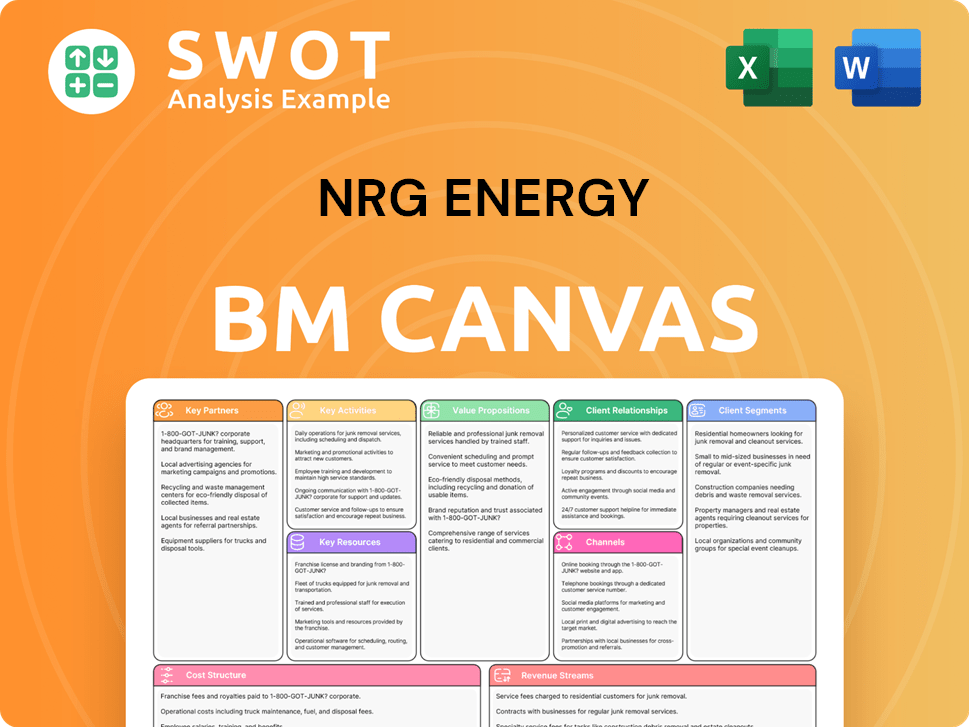
What Recent Changes Have Shaped NRG Energy’s Ownership Landscape?
Over the past few years, the ownership structure of NRG Energy has seen some shifts. A key trend has been the company's active management of its portfolio through strategic moves like divestitures and acquisitions. For instance, in early 2024, NRG Energy completed the sale of its interest in the GenOn Mid-Atlantic power plants. These actions can influence the NRG Energy ownership landscape by affecting its financial standing, potentially leading to share buybacks, which in turn can impact earnings per share.
Institutional investors continue to hold a significant portion of NRG Energy's shares. This aligns with a broader industry trend where large asset managers and index funds play a major role in corporate ownership. The rise of Environmental, Social, and Governance (ESG) investing also subtly influences investor decisions, with some institutional investors considering companies' environmental performance and governance practices. For those interested in a deeper dive, you can explore the Growth Strategy of NRG Energy.
NRG Energy has been actively optimizing its portfolio through strategic divestitures and acquisitions, impacting its ownership profile. Institutional investors remain the primary holders of NRG Energy stock. ESG investing is subtly influencing investment decisions.
Executive transitions, while not directly changing ownership percentages, can affect investor confidence. The company communicates its financial performance through earnings calls and investor presentations. These communications can influence investor behavior.
NRG Energy Porter's Five Forces Analysis
- Covers All 5 Competitive Forces in Detail
- Structured for Consultants, Students, and Founders
- 100% Editable in Microsoft Word & Excel
- Instant Digital Download – Use Immediately
- Compatible with Mac & PC – Fully Unlocked
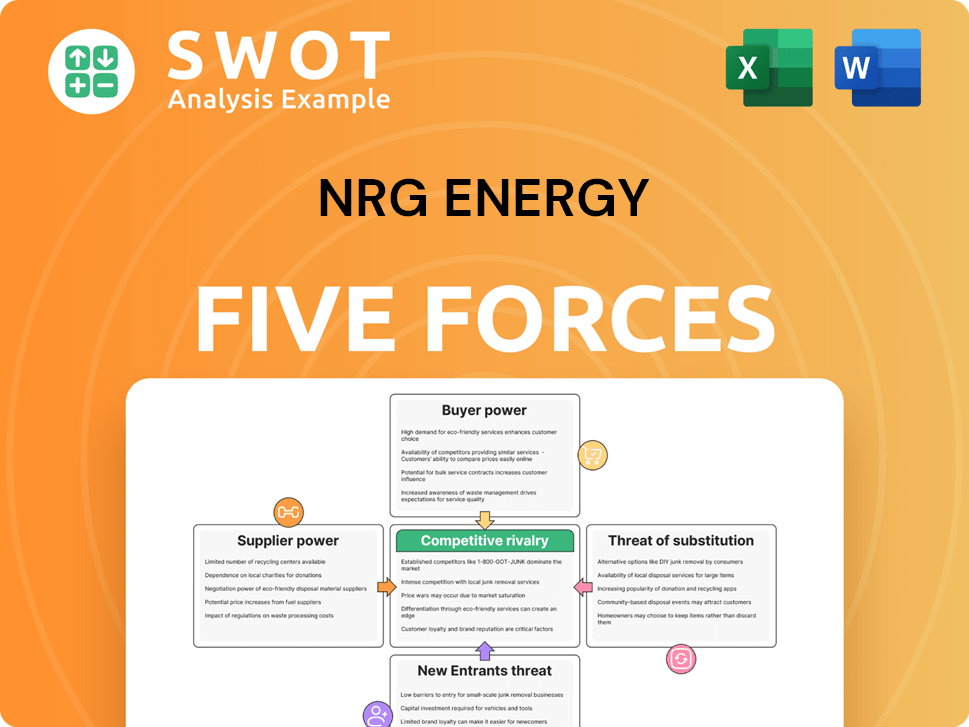
Related Blogs
- What are Mission Vision & Core Values of NRG Energy Company?
- What is Competitive Landscape of NRG Energy Company?
- What is Growth Strategy and Future Prospects of NRG Energy Company?
- How Does NRG Energy Company Work?
- What is Sales and Marketing Strategy of NRG Energy Company?
- What is Brief History of NRG Energy Company?
- What is Customer Demographics and Target Market of NRG Energy Company?
Disclaimer
All information, articles, and product details provided on this website are for general informational and educational purposes only. We do not claim any ownership over, nor do we intend to infringe upon, any trademarks, copyrights, logos, brand names, or other intellectual property mentioned or depicted on this site. Such intellectual property remains the property of its respective owners, and any references here are made solely for identification or informational purposes, without implying any affiliation, endorsement, or partnership.
We make no representations or warranties, express or implied, regarding the accuracy, completeness, or suitability of any content or products presented. Nothing on this website should be construed as legal, tax, investment, financial, medical, or other professional advice. In addition, no part of this site—including articles or product references—constitutes a solicitation, recommendation, endorsement, advertisement, or offer to buy or sell any securities, franchises, or other financial instruments, particularly in jurisdictions where such activity would be unlawful.
All content is of a general nature and may not address the specific circumstances of any individual or entity. It is not a substitute for professional advice or services. Any actions you take based on the information provided here are strictly at your own risk. You accept full responsibility for any decisions or outcomes arising from your use of this website and agree to release us from any liability in connection with your use of, or reliance upon, the content or products found herein.